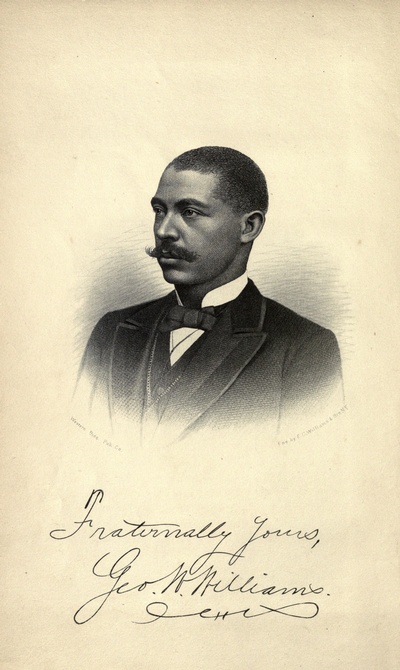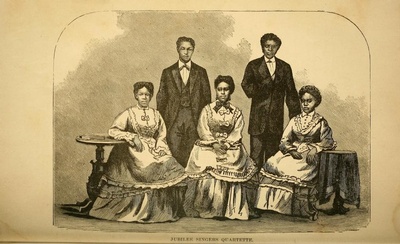In celebration of Black History Month, the Free Library's Social Science and History Department is displaying books from the collection that tell a visual history of Reconstruction — the period from 1865 to 1877 that saw some of the most radical changes in American history.
The images on display, from books published as early as 1866, depict the struggle for Black people to become full American citizens in the wake of the Civil War and emancipation from slavery. Black people are seen holding a discussion in a town forum, teaching a classroom full of students, and legislating in the South Carolina State House. During this period, Black men were elected to public office in the South — a practice that white supremacists would curtail for a century once Reconstruction ended with the Compromise of 1877. One of the most remarkable images in the display is a composite portrait of an interracial group labeled "Radical Members of the South Carolina State Legislature," created by opponents of Reconstruction and distributed with false claims that the majority of the Black members were illiterate. While this image was created with racist intent, viewers might see this as a collage of heroes. The integrated assembly rewrote the South Carolina constitution to allow non-property holders to vote, provide free education for children of any race, raise taxes on large landowners, and give women the right to own property and get divorced. The preamble to the new state constitution declared, “All political power is vested in and derived from the people only” — a phrase that would resonate with a popular slogan of the Black Freedom Movement a century later.
The display includes several portraits that expand the canon of Black History Month luminaries beyond the usual stars. These include Daniel Alexander Payne, the first Black college president; George Washington Williams, the first Black author to write a comprehensive history of African Americans; the members of the Fisk Jubilee Singers, whose tours popularized what was then called the “Negro spiritual,” fundamentally altering the course of American music; and John R. Lynch, the author of one of the first books that tried to tell a non-white-supremacist history of the Reconstruction era.
How that history has been told is the subject of the final portion of the display. The dominant narrative for nearly a century was that the South was oppressed by an unfortunate alliance between ignorant Blacks, cruel northern whites, and corrupt southern whites. Many Black writers rejected this all along, but only with the 1935 publication of W.E.B. Du Bois’s Black Reconstruction in America was this version comprehensively refuted by a major scholar. On display are books on both sides of this debate, published between 1881 and 1913, culminating with a copy of Du Bois’s masterpiece. The display concludes with a page from Freedomways magazine that depicts attendees at the centennial celebration held in Du Bois’s memory at Carnegie Hall in 1968. One of those depicted attendees, Martin Luther King, Jr, told the gathered audience that Du Bois "restored to light the most luminous achievement of the Reconstruction — it brought free public education into existence not only for the benefit of the Negro but it opened school doors to the poor whites ... [Du Bois] virtually, before anyone else and more than anyone else, demolished the lies about Negroes in their most important and creative period of history."
All the images described here and more are housed in the two display cases on either side of the entrance to the Social Science and History Department, on the Second Floor of Parkway Central Library. The display will be on view through the end of March 2024.
Have a question for Free Library staff? Please submit it to our Ask a Librarian page and receive a response within two business days.



